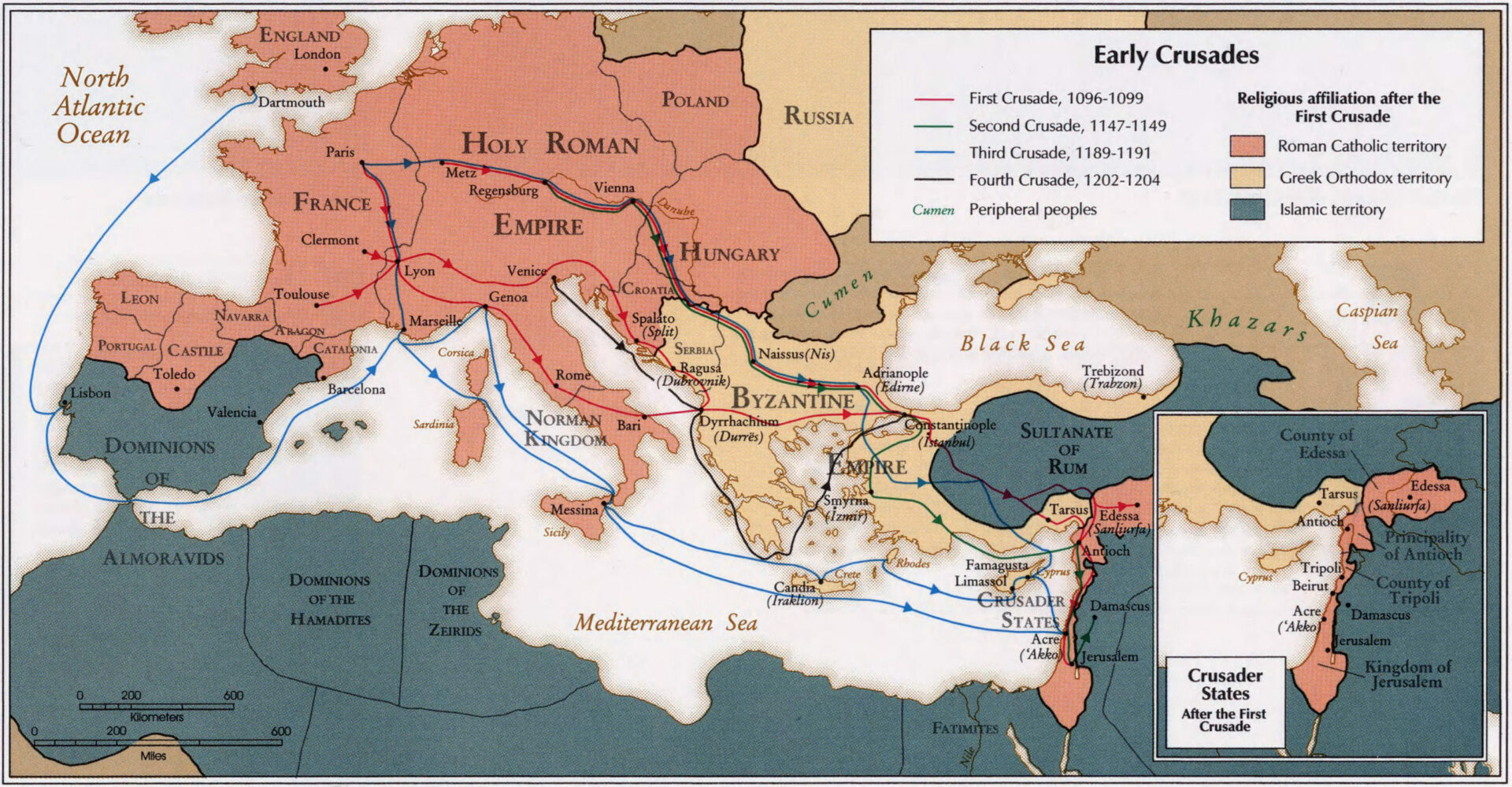When the Greeks of Nicaea under Michael VIII Palaeologus (r. 1259-1282) recaptured Constantinople, they found it depopulated and badly damaged and the old territory of the Empire mostly in Latin hands. It was impossible for Michael to reconquer all of Greece or the islands, to push the frontier in Asia Minor east of the Seljuk capital of Konia, or to deal effectively with the Serbians in the Balkans.
However, he staved off the threat posed to his empire by Charles of Anjou, younger brother of St. Louis. Just as a new and powerful force seemed headed for Byzantium in 1282, a revolt known as the Sicilian Vespers forestalled invasion and Charles of Anjou’s plans had to be abandoned.
So incompetent and frivolous were most of the successors of Michael VIII that they contributed materially to the decline of their own beleaguered Empire. Wars among rival claimants for the throne tore the Empire apart internally. Social unrest reappeared as Thessalonica was torn by civil strife. The value of the currency was allowed to decline. New controversy divided the clergy, already tormented by the choice between uniting with Rome or, it appeared, perishing.
From about 1330 a new movement was reviving monasticism throughout the whole of eastern Europe, a revival associated with Hesychasm (Greek hesychia, “quietude”). In the tenth century, monks of the Orthodox Eastern church had founded at Mount Athos in northern Greece a remarkable monastery from which females, human or animal, were banned. Responsible directly to the patriarch of Constantinople, these monks preserved their independence, governing themselves and devoting their energies to self-sufficiency and to scholarship. From Mount Athos many monks founded other movements.
One of these monks, St. Gregory of Sinai, set up a monastery in southeastern Bulgaria that emphasized the Hesychast goal: a mystical state of recollection and inner silence that would be achieved after man’s victory over his passions. Only contemplative prayer could lead to God, though bodily exercises meant to aid spiritual concentration were also important.
In the early fourteenth century monastic churches within the walls of Constantinople were restored under the patronage of wealthy men. Byzantine churchmen took a renewed interest in scholarship, in the maintenance of libraries, and in the Greek heritage, preserving for future generations the knowledge of the past. Byzantine society recognized both the life of the world and the life of the spirit.
Some monks emphasized Greek literature and philosophy, known as the “outer” wisdom, which prepared one for the truth; others, often illiterate, emphasized the “inner” knowledge that came from the “divine light” that illuminated the soul. Humans were sanctified through this divine light, through a direct experience that involved the body and the soul.
Obviously such teachings posed grave problems for the traditional views of the Orthodox church, and many commentators ridiculed the Hesychast movement. Nonetheless, the mystical movement initiated a renaissance of learning and spirituality in fourteenth- century Byzantium.

